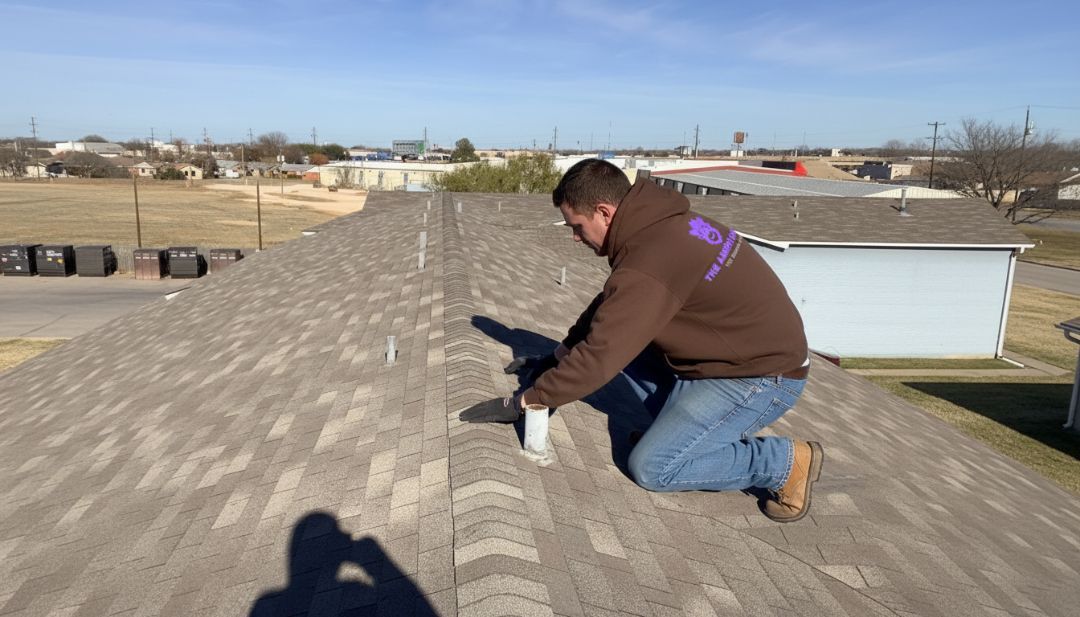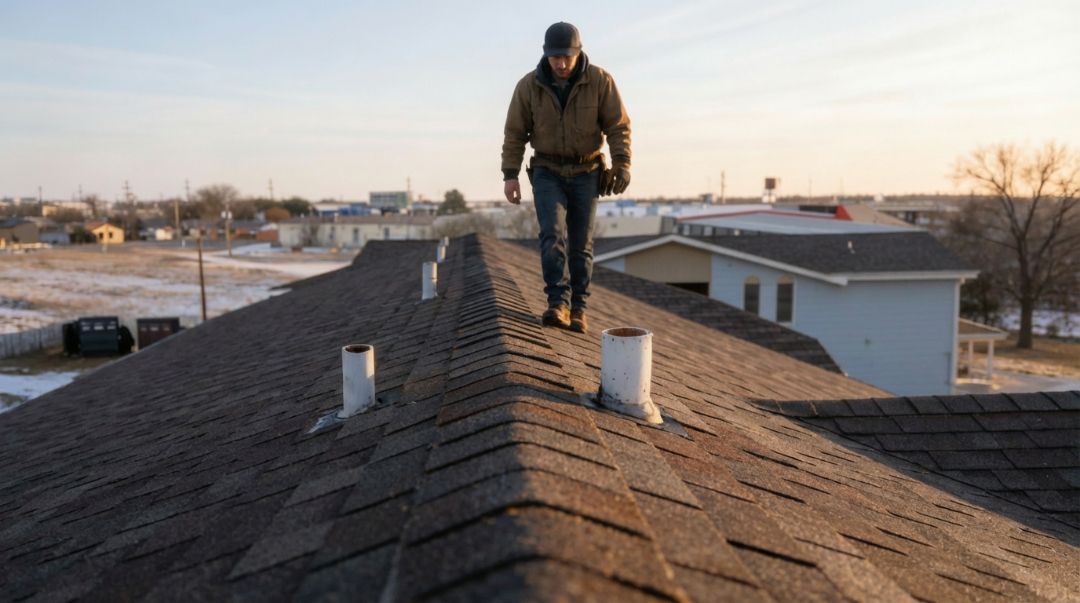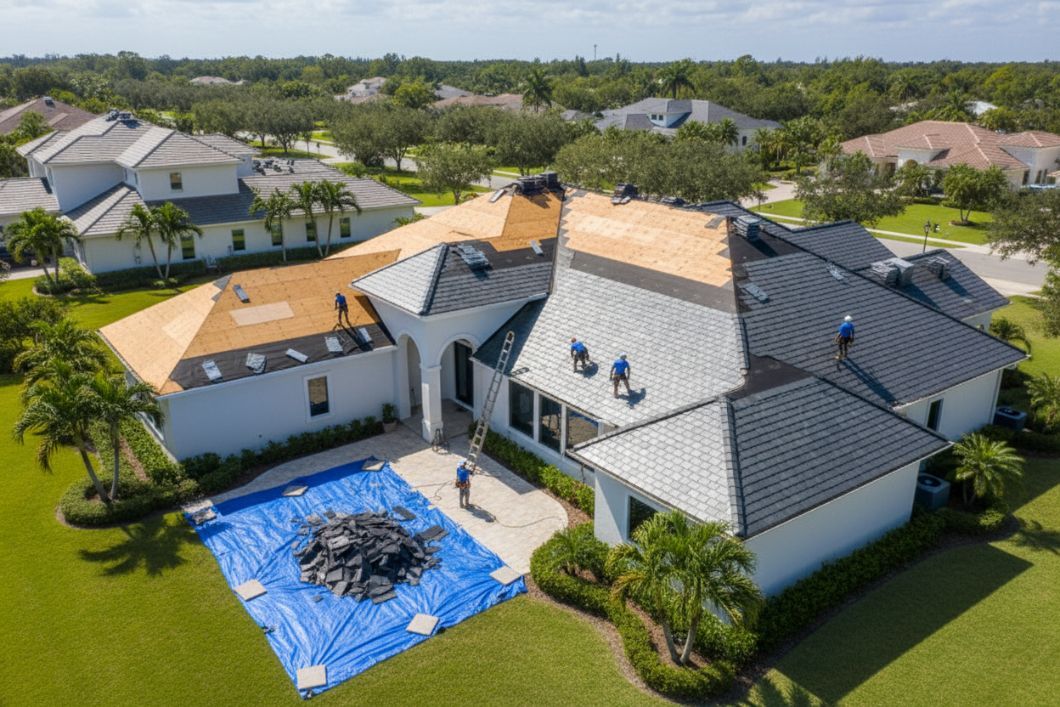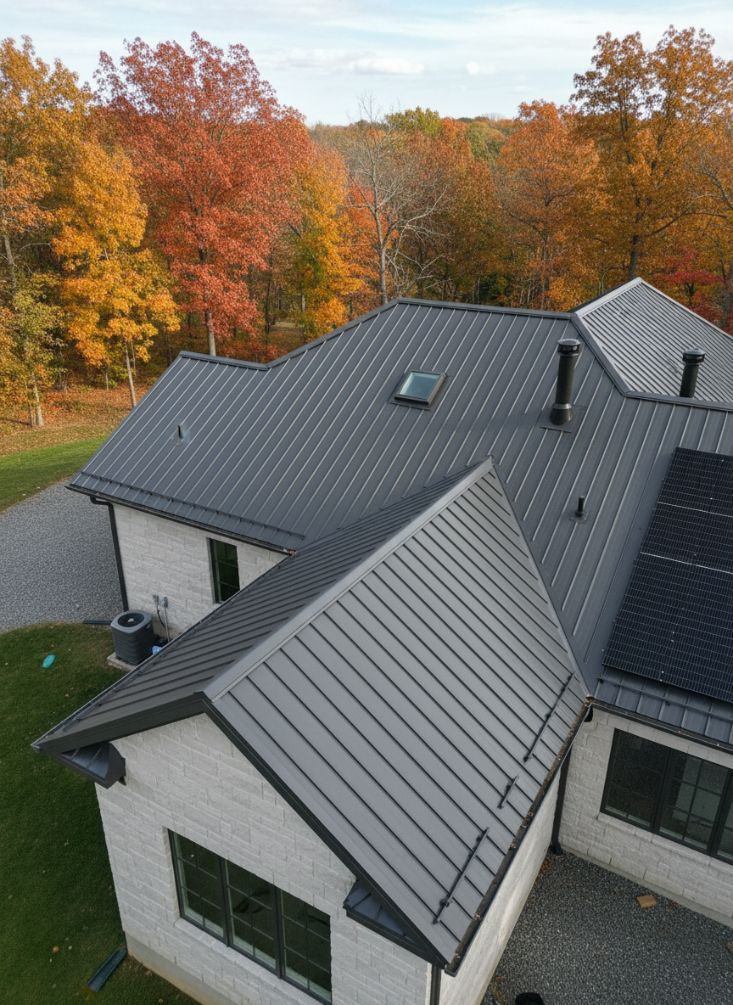What Should I Do If I Find Mold or Algae on My Roof?
If you find mold or algae on your roof, the best course of action is to remove it using appropriate cleaning solutions or hire professional services to prevent further damage and maintain the roof's structural integrity. For smaller areas, a mixture of bleach and water can be applied with care, while larger infestations typically require professional expertise to ensure safety and thoroughness.
Understanding Mold and Algae Growth on Roofs
Mold and algae are common roof nuisances, but they differ in their characteristics:
- Mold: A fungus that thrives in damp, dark environments. Mold appears as black, green, or gray patches and can degrade roofing materials over time.
- Algae: Often recognized as dark streaks (caused by Gloeocapsa magma), algae flourish in humid conditions and feed on organic material present on shingles.
Both issues can stem from excess moisture, lack of sunlight, and organic debris like leaves. Additionally, roofs in shaded or humid areas are more prone to these growths due to their optimal conditions for moisture retention.
Identifying Signs of Mold and Algae
Look out for these indicators:
- Black Streaks: Typically caused by algae, these streaks can spread across the roof’s surface.
- Green or Gray Patches: These are likely mold or moss, indicating prolonged moisture exposure.
- Roof Discoloration: Any significant change in your roof’s appearance could be a sign of unwanted growth.
- Granule Loss: Over time, mold and algae can lead to the erosion of granules on shingles, affecting the roof’s durability.
Recognizing these signs early can save you from costly repairs and ensure your roof maintains its aesthetic appeal and functionality.
Risks Associated with Roof Mold and Algae
Ignoring these issues can lead to:
- Roof Deterioration: Mold and algae weaken shingles, reducing their lifespan. Algae, in particular, can cause asphalt shingles to lose their reflective properties, leading to heat absorption and premature aging. Mold and algae weaken shingles, reducing their lifespan. Algae, in particular, can cause asphalt shingles to lose their reflective properties, leading to heat absorption and premature aging. For a deeper understanding of factors influencing roof durability, explore Roof Lifespan Factors.
- Health Concerns: Mold spores can affect indoor air quality, posing risks to those with allergies or respiratory conditions. Algae, though less hazardous, can indicate a larger moisture problem.
- Aesthetic Impact: Algae and mold create unsightly stains, decreasing your home’s curb appeal. This can be a significant drawback if you’re planning to sell your property.
- Increased Energy Costs: Algae can trap heat, reducing your roof’s ability to reflect sunlight efficiently. This can increase cooling costs during warmer months.
- Structural Damage: Prolonged mold growth can lead to wood rot or compromise the structural integrity of your roof’s underlayment.
DIY Methods for Removing Mold and Algae
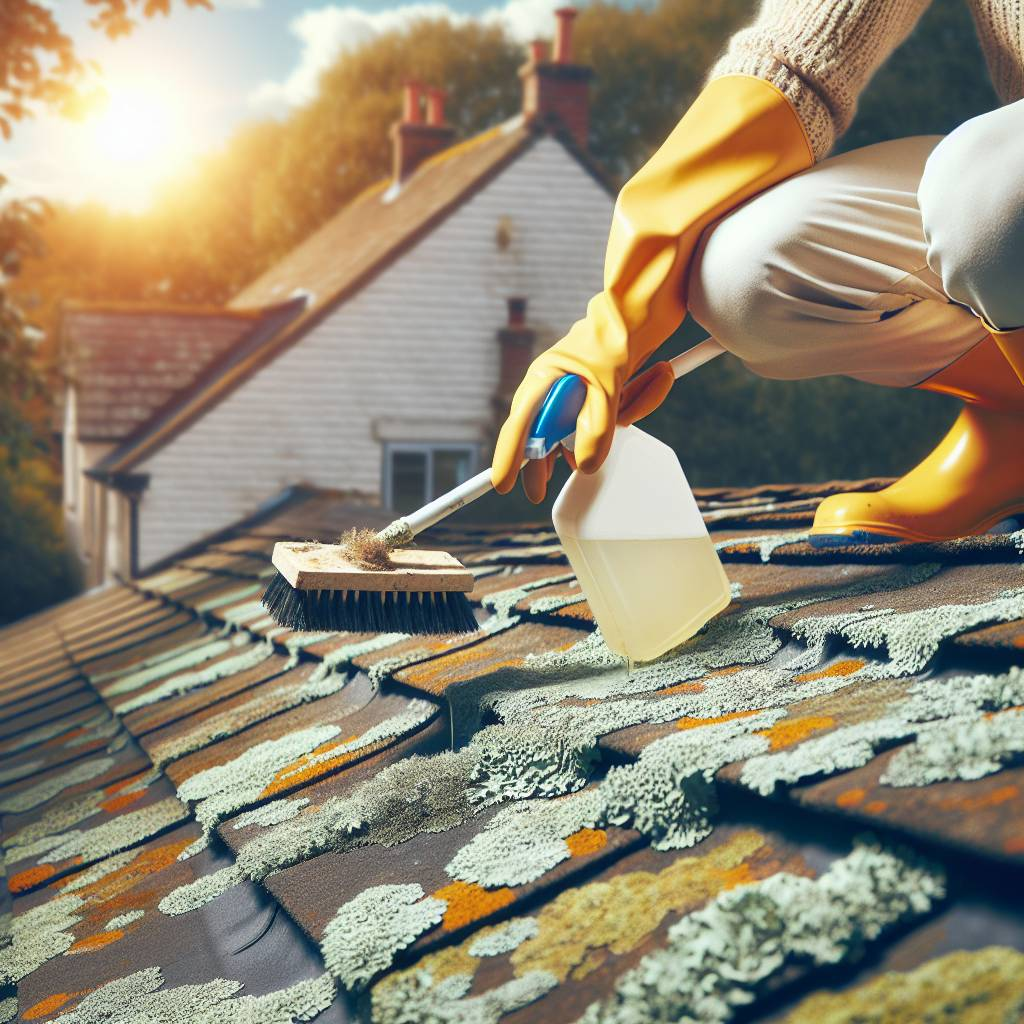
Safety Precautions
- Wear protective gear: gloves, goggles, and non-slip shoes.
- Avoid working on wet or steep roofs to minimize the risk of slipping.
- Use a stable ladder and, if possible, have someone nearby to assist you.
Step-by-Step Guide
- Remove Debris: Clear leaves and branches to expose the roof surface. This allows for better access to the affected areas.
- Prepare Cleaning Solution: Mix a 50/50 solution of water and chlorine bleach or use a commercial roof cleaner specifically designed for mold and algae removal.
- Apply Solution: Use a garden sprayer to evenly distribute the cleaner over the affected areas. Let it sit for 15-20 minutes to break down the growth.
- Gently Scrub: Use a soft-bristled brush to remove stubborn stains without damaging shingles. Avoid using harsh tools or pressure washers, as they can strip granules from the shingles.
- Rinse Thoroughly: Use a garden hose to rinse the roof, starting from the top to avoid forcing water under the shingles. Ensure all cleaning solution is removed to prevent further discoloration.
- Inspect for Damage: After cleaning, check for any signs of shingle damage, granule loss, or areas that might need further attention.
When to Call Professional Roof Cleaning Services
Sometimes, DIY isn’t enough. Call a professional if:
- The infestation covers a large area, making it challenging to handle on your own.
- Your roof is multi-story or steep, increasing the risk of accidents.
- There are signs of shingle damage or leaks, which require expert assessment and repairs.
- You lack the tools or expertise to clean effectively without causing additional damage.
Choosing a Professional
- Research Credentials: Look for licensed and insured contractors with positive reviews and references.
- Ask About Methods: Ensure the cleaning methods used are safe for your roofing materials. Soft washing is often preferred for delicate shingles.
- Get an Estimate: Request a detailed estimate, including the scope of work and expected costs.
Hiring a reputable professional not only ensures thorough cleaning but also provides peace of mind that your roof is in good hands.
Preventing Future Mold and Algae Growth
- Install Zinc or Copper Strips: These metals release particles that inhibit algae growth when rainwater washes over them. They’re an effective long-term solution.
- Trim Overhanging Branches: Reducing shade minimizes moisture retention and debris accumulation on your roof.
- Clean Gutters Regularly: Clogged gutters can lead to water backup, which encourages mold growth. Keep them clean to maintain proper drainage.
- Schedule Regular Inspections: Periodic roof checks can catch issues early and prevent costly repairs.
- Choose Algae-Resistant Shingles: When replacing your roof, opt for materials specifically designed to resist algae and mold growth.
- Improve Ventilation: Proper attic ventilation reduces moisture buildup, a common cause of mold and algae growth.
- Keep the Roof Clean: Sweep off debris regularly and wash the roof as needed to maintain its condition.
Potential Outcomes of Not Maintaining Your Roof
- Costly Repairs: Ignoring mold and algae can lead to roof leaks, requiring expensive repairs or even full roof replacement.
- Reduced Property Value: An unkempt roof lowers your home’s market appeal, making it harder to sell.
- Energy Inefficiency: Trapped heat from algae can spike cooling costs and strain your HVAC system.
- Compromised Structural Integrity: Prolonged exposure to moisture can weaken your roof’s underlayment and supports.
Conclusion
Mold and algae on your roof are more than cosmetic concerns; they’re signals to act. Regular maintenance, prompt cleaning, and preventive measures can protect your roof’s longevity and your home’s value. Whether you tackle the problem yourself or call in professionals, addressing it early is the key to avoiding long-term damage.

